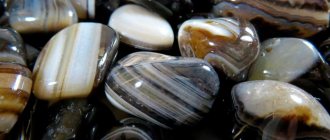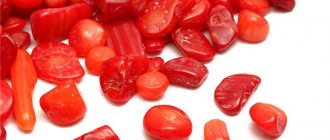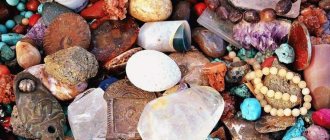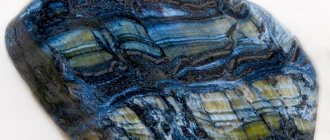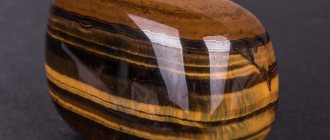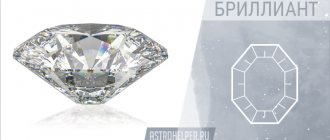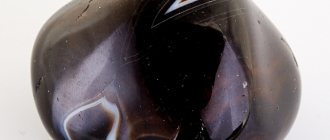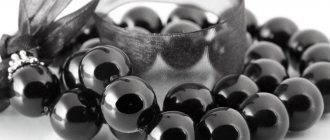Pearls, amber, coral and other gems are again at the peak of popularity today. Jewelry with these stones is natural, beautiful and more affordable than diamonds. Quite often they are chosen because of the energetic power inherent in the stone. However, when the stone is fake, there will be no effect - neither aesthetic nor energetic.
Therefore, when choosing natural gems, it is important to find a real stone.
We learned to create artificial versions of stones and fakes of different quality when we realized that this was a great way to make money. The high cost of natural corals, pearls and other gems leads to a large number of fakes appearing on the market. Regarding corals, these can be plastic beads or glass painted in the desired color. How to learn to identify real coral, how to distinguish a fake from a natural stone? Let's try to figure it out.
What is coral and what types do jewelers use?
Corals are not stones, but the external skeleton of an invertebrate predatory animal, roughly speaking, the “bones” of many polyps. The size of one individual of a marine organism in a colony is only 1-2 mm. During its life, the polyp, feeding on plankton, forms calcium and magnesium carbonate and iron oxide from the components of sea water, thus forming an exoskeleton. The organic component of 1% gives the color shades of corallite. The color is also affected by the depth of habitat.
Silver pendant with corals and cubic zirconia, SL; silver earrings with corals and cubic zirconia, SL; silver ring with corals and cubic zirconia, SL (prices via links)
Corallite of the same species, but grown in different conditions, differs in shape and color. Coral trees grow slowly: a few millimeters per year in width, and 1-7 cm in length. Overgrown coral reefs still slow down their growth and are destroyed over time. Coral polyps can live in any ecologically clean seas at temperatures up to +4 °C, but build reefs only where algae survive, providing the colony with nutrients, that is, at a temperature not lower than +18 °C.
Coral in astrology and its magical properties
Coral is considered a talisman for travelers. This stone is suitable for passionate and emotional natures. They believe that jewelry with coral makes its owner more attractive to the opposite sex and fills it with confidence. He is able to revive cooled feelings and rekindle love. Earrings or beads with red corals awaken energy in a person, relieve lethargy and apathy.
Pink coral brings happiness, helps to build a new life, makes the owner softer and more feminine, while white coral harmonizes.
It is recommended to wear such jewelry for zodiac signs such as Pisces, Capricorn and Scorpio. But coral is not contraindicated for other signs either.
Types of Natural Corals
According to the place of extraction, coral raw materials for jewelers are divided into Mediterranean and Pacific. The following types of natural corals are distinguished:
- Approximately 25 types of coral polyps are formed from calcite and aragonite (a polymorph of calcium carbonate). Jewelers call them “noble”. These are mainly gorgonians - horny corals of the species Corallium rubrum with different colors: from white to black, more than 350 shades. Each color has its own name, sometimes poetic: “angel skin”, “ox blood”, “greatest”, “sea bamboo”. Most often, red and pink are used for stone cutting. Moreover, in the old days, dark ones were specially lightened, but now white ones are tinted to a bright color.
- There are also soft coral polyps that harden in air, while remaining quite porous. May consist entirely of organic material . On the Internet they are most often called “Black Akkabars”. But this is not entirely true. Because completely organic polyps, such as the endangered fan Ctenocella or Ellisella, can come in other colors: red-pink, black, even gold, blue and amethyst.
- There is a fossilized agate coral . Deposits have been found in the USA (Florida and Michigan) and in Russia, but are not yet widely used.
Gold pendant with diamonds, amethysts and coral, SL;
gold earrings with diamonds, amethysts and coral, SL; gold ring with diamonds, amethysts and coral, SL (prices via links) Coral branches with greater hardness (from 3.5-4) are valued, they are called “royal”.
These are usually deep-sea species. Previously, the difficulty of extraction and hardness prevented their use in jewelry, so more easily processed ones were common. Currently, it has become easier to obtain ornamental material, but since 1963 there has been a ban on harvesting corals in many countries due to the IUCN (World Conservation Union) resolution.
The healing properties of the mineral
People fell in love with this stone not only for its beautiful appearance, but also for its healing properties. The first potions using corals were made in ancient Rome. In the modern world, powders are made from this mineral. It is also used in dentistry, usually in the field of prosthetics.
Other healing properties of the stone include its ability to give its owner energy, longevity, strengthen the immune system, and save from depression. Many people believe that the stone is able to protect a pregnant woman, helping her successfully bear and give birth to a child. In ancient times, coral amulets were worn by both children and elderly people.
In addition, it is believed that the stone can help with throat diseases, such as sore throat or tracheitis. Jewelry made from it helps cleanse its owner of toxins and improves the functioning of the circulatory system.
In general, the mineral relieves its owner from fatigue, tones his body, and stabilizes his emotional and psychological state. If we answer the question of who this mineral is suitable for, then we can say that products made from it can be worn by people of any age.
How corals are faked
Demand, slow recovery, death of reefs due to ecology and predatory extermination, bans on mining determine the high price of natural coral products. Real red coral is an expensive rarity; one bead can cost about $50. Instead, at best, they will sell you painted white. At worst:
- Imitations, which are quite possible, if they are declared so.
- Counterfeits. When a low-quality or outright fake made of minerals, glass, polymers or plastic is passed off as a high-quality item. This is a scam.
“Sea trees” have been used in jewelry since time immemorial, and even then there were fakes; they were found in ancient burials. Glass beads imitating coral beads were found in Tutankhamun's tomb.
It is cost-effective to fake only colored types of coral, because white is cheap. Previously, glass, fossilized painted bones (odontolite), porcelain, horn, and minerals: quartzite, howlite, cacholong were passed off as coral beads.
With the growth of technology, there are more ways to fake corals: polymer resins, plastics, neolith (a combination of copper phosphate and aluminum hydroxide) appeared.
Separately, there are “pressed” coral blanks. Crumbs and powder of mollusk shells, as well as the mineral aragonite or lime spar (calcite), are decolorized by acid treatment and combined with polymer composites. Then they paint over it. The only thing relevant to the marine exoskeleton of the polyp is that the fake contains calcinite.
Since the 70s Synthetic “Gilson coral” is also made from calcite powder. (Named after the owner of a Swiss company, who also invented a cheap substitute for black opals.) And recently, a new technology for simulating a rare Hawaiian gold variety has appeared in the Philippines.
If a good imitation is offered at a reasonable price, especially from “long-lasting” minerals like howlite, then the purchase is quite successful. It's a shame when a fake is passed off as expensive coral.
Silver earrings with cubic zirconia and corals, SL; silver ring with cubic zirconia and coral, SL (prices follow links)
Application and care
Products made from coral come in a wide variety. Figurines, finishing tiles, and paperweights are cut out of large spongy stones. The more beautiful and brighter, but smaller specimens are used for decoration. The most popular method of processing such crystals is turning beads, from which they are then assembled into bracelets or beads.
There are various types of coral products. Beads and other jewelry are very popular.
In order for the properties of coral to be preserved as long as possible, it must be properly cared for. The mineral needs protection from mechanical damage - shocks, scratches, friction. It also does not tolerate hot baths - it is better to remove the gem in the sauna. It is advisable to put it on before applying perfumes and cosmetics - this reduces the likelihood that aggressive substances will get on the crystal.
It is not advisable to wash corals; it is best to simply brush gently with a soft toothbrush.
They are afraid of sea stones and household chemicals, so it is better to remove jewelry when preparing to start cleaning. It is advisable to store them separately from all other minerals.
When putting away for storage, you can wrap the gems in a light, breathable fabric; a budget option is thin cigarette paper. But it is undesirable to use plastic bags; living stones must breathe.
How to distinguish coral from a fake?
To distinguish coral from a fake you need to know the following:
- Real coral is rarely uniformly colored. Banding is its distinctive feature.
- When a coral branch is cut crosswise, the radiant structure is clearly visible. And “pressed” consists of pieces and crumbs.
- Untreated corals are matte and are rubbed with waxy polishes. Often defects are corrected with certain resins. Jewelers call the procedure “stabilization.” In addition to its decorative function, such a layer also has a protective function, because corals are fragile. But the coral shine is not glassy, but softer, “oily”, unlike mineral, porcelain and glass imitations. If coral is heated, it will lose its shine.
- If you heat it for a very long time, it will turn gray, become covered with a mesh and crumble. Polymer resins in “blends” will give off a plastic smell and turn black.
- The minerals are also brittle, but the needle-like fracture of coral beads differs from the lamellar fracture of calcite and the smooth fracture of howlite.
- After lying in water, natural sea material will become brighter, and fake material will not absorb liquids.
- If the water turns pink, you most likely purchased a poorly colored white one. Dyed coral can be recognized by its irregular, web-like spots.
- Corals are lighter than marble, neolithic stones. And they don't feel so cold to the touch.
- Corallite dissolves in acids, however, fakes containing calcinite can also react with them (hiss).
- Completely organic types of coral do not react to acids, but burn. And not as intense as the horn. And odontolite has a cellular structure when viewed through a magnifying glass.
- If painted fakes made from other materials are scraped, the paint layer will peel off.
- Plastic can be easily identified by weight, type and price.
The main difference is that a high-quality coral item cannot be cheap
And when purchasing rare specimens, it is worth contacting an appraiser who knows how to distinguish corals from fakes. It is better to purchase jewelry with coral inserts from trusted places with a good reputation.
Place of Birth
The mineral is mined in tropical waters. Since coral is, in fact, the remains of living beings, it grows on its own in the favorite places where polyps live. These include the seabed at a depth of 3-5 meters. Some kind of “bushes” form there. Previously, they dived for them, now they catch them with a special net.
Black corals are one of the most valuable.
After extraction, such a “bush” is processed: all soft parts that have not had time to become saturated with sea salt and crystallize are removed. The stones are then sorted by appearance and defects. Only after this can they be carried for sale.
Coral is harvested on an industrial scale where climate conditions allow it to grow as densely as possible. This requires extensive shallows and an average annual temperature of around twenty degrees. The following countries actively supply stones to the market:
- Italy;
- Algeria;
- Tunisia;
- Australia;
- Egypt;
- Canary Islands;
- Samoa;
- Japan.
Stones of a black or deep dark blue hue are very highly valued. They are mined in the Red Sea, on the islands of the Malay Archipelago, as well as along the coast of India. Unfortunately, the number of polyps in these places is now declining.
Magical abilities of the stone
In ancient times, people associated everything around them with magic. Many believed that all gems have magical properties. In ancient times, coral was used to make all kinds of amulets intended for both men and women. It was believed that they should protect their owner from adversity, damage, the evil eye and bring him good luck and happiness.
In the Middle Ages, when people turned to religion, one of the main meanings of the stone was to protect people from the temptations of the devil. For these purposes, rosaries were made from it, churches, temples, crosses and other objects necessary for the performance of worship were decorated with it.
Jewelry and amulets found in excavations in territories belonging to the Mayan Indians in ancient times indicate that these tribes believed that coral beads and necklaces could remove the evil eye or damage from their owner.
Also, rings with coral inserts and other jewelry made from this gem could help their owner discover the gift of foresight. Oracles enjoyed using products made from coral.
Eastern peoples loved to decorate books and weapons with the mineral, as they believed that it could increase intelligence and strength. In India, people believed that the stone was necessary for wanderers, as it helped them return home safe and sound. Particular attention has always been paid to the magical properties of black coral, although it is found in nature much less frequently than the beloved red one.
Also, judging by the photo of the properties and meaning of the mineral, it can:
- Changing natural conditions, for example, helps a thunderstorm or storm subside;
- Provides protection from the enemy;
- Attracts happiness and success to its owner;
- Protects the owner from troubles and misfortunes.
The stone especially favors those people who match their zodiac sign.
The meaning of the gem in the zodiac signs
People have always been concerned about which zodiac sign this or that stone is suitable for, since it was believed that a mineral suitable for the zodiac sign is capable of protecting its owner from adversity and will provide him with a happy future. If we talk about magical properties for a zodiac sign, astrologers believe that choosing the right stone is very important, since an unsuitable amulet can only bring evil and illness to its owner.
- Coral is one of the few gems that suit almost any zodiac sign. Astrologers do not recommend wearing it only to Virgos. The fact is that for a Virgo woman, coral jewelry does not promise anything good; the mineral does not like this sign because it belongs to the element of Earth, and also because it is too pessimistic about life.
- But if we talk about who this gem is suitable for according to the horoscope, then the answer is obvious for the Pisces woman; it will become an indispensable talisman. Representatives of the fair sex are extremely lucky, since coral jewelry of any red or brown shade will protect its owner and bring her happiness and good luck.
- Also, if we talk about what sign this stone is suitable for, then we can say that for a Scorpio woman, choosing products from it will also bring good luck and success, but you should pay attention to the more delicate colors of the mineral. Astrologers also believe that wearing coral jewelry will be useful and safe for Gemini women.
In addition to the zodiac signs, when choosing a talisman stone, an important role is played by the year of which animal according to the eastern calendar the person was born. Astrologers have found that coral is most favorable to those born in the year of the Tiger.
Compatibility with other stones
Coral is one of the unique stones that belongs to three elements at once - Water, Earth, Fire. A combination with minerals such as:
- Sapphire;
- Lapis lazuli;
- Onyx;
- Pearl;
- Turquoise;
- Amethyst.
It is not recommended to combine corals with Agate, Malachite, Sardonyx, Beryl, Jasper.

